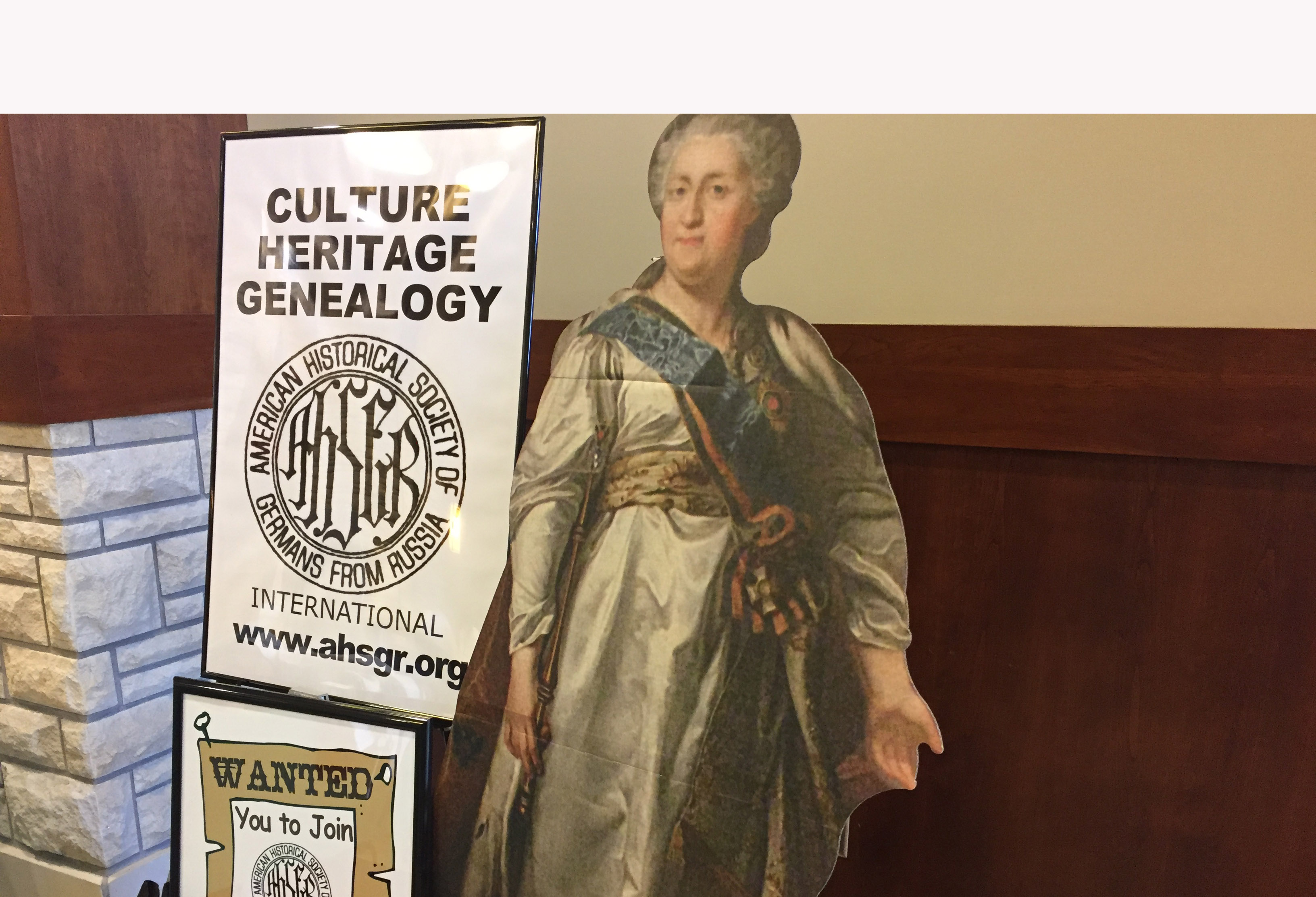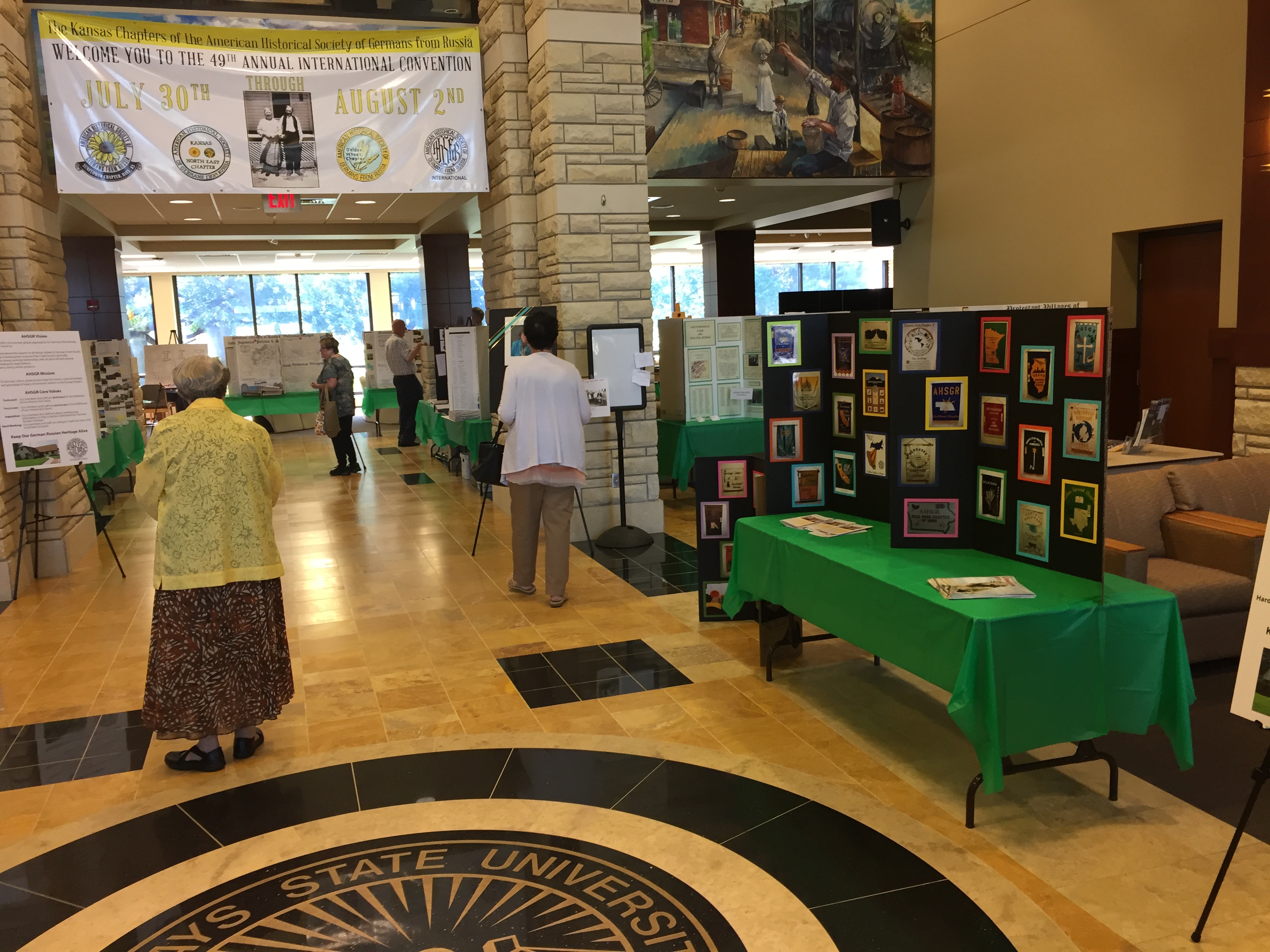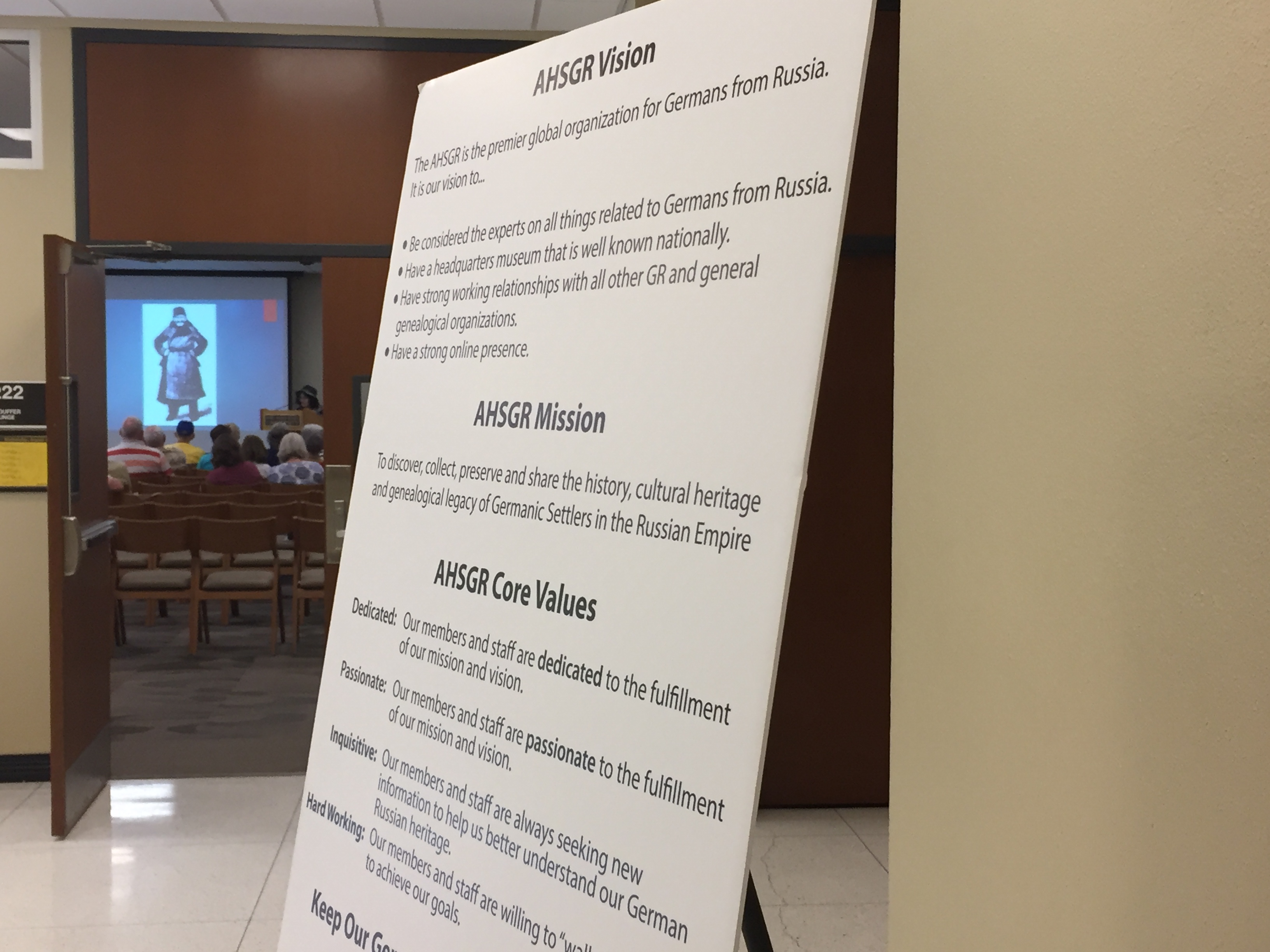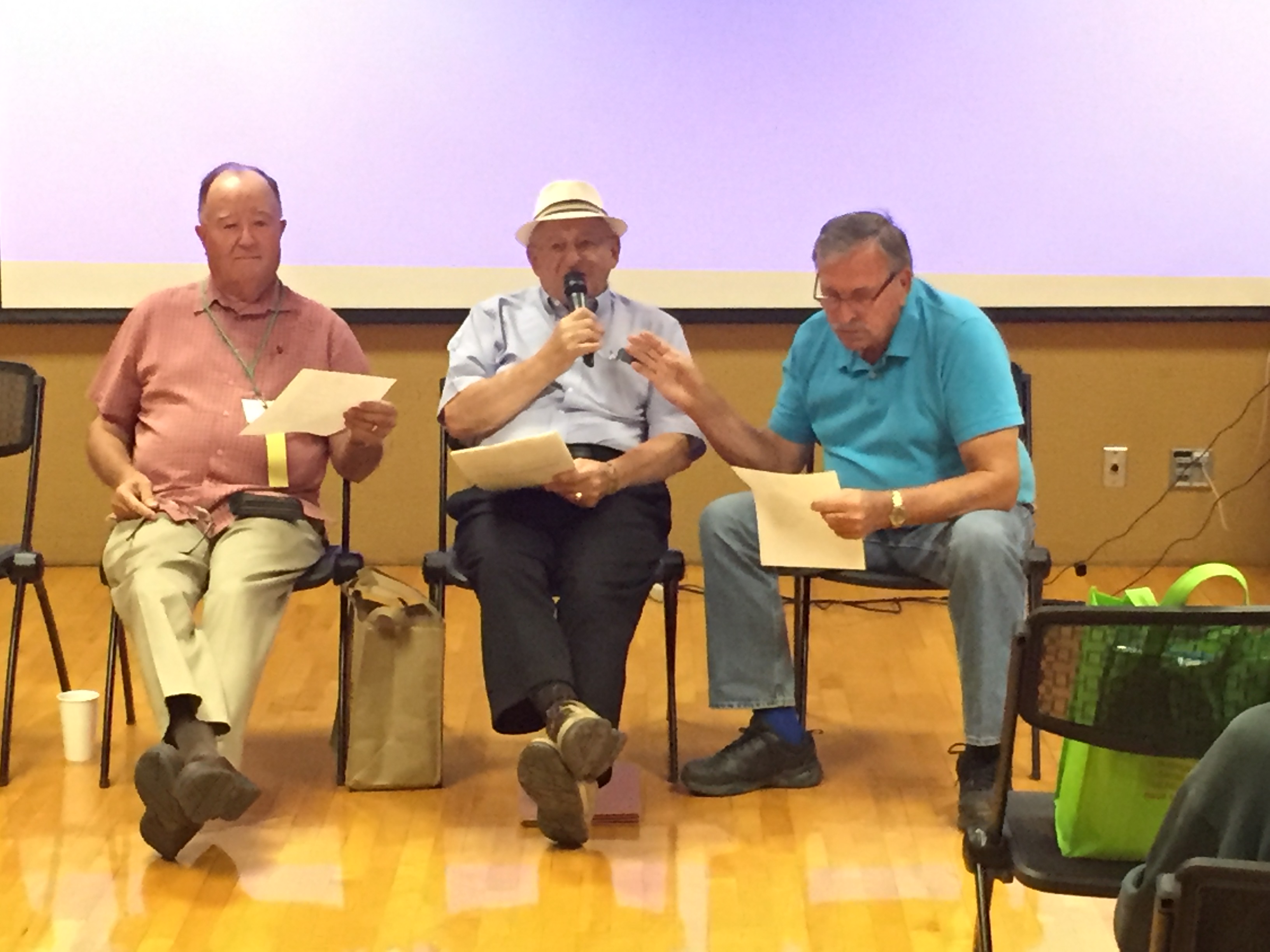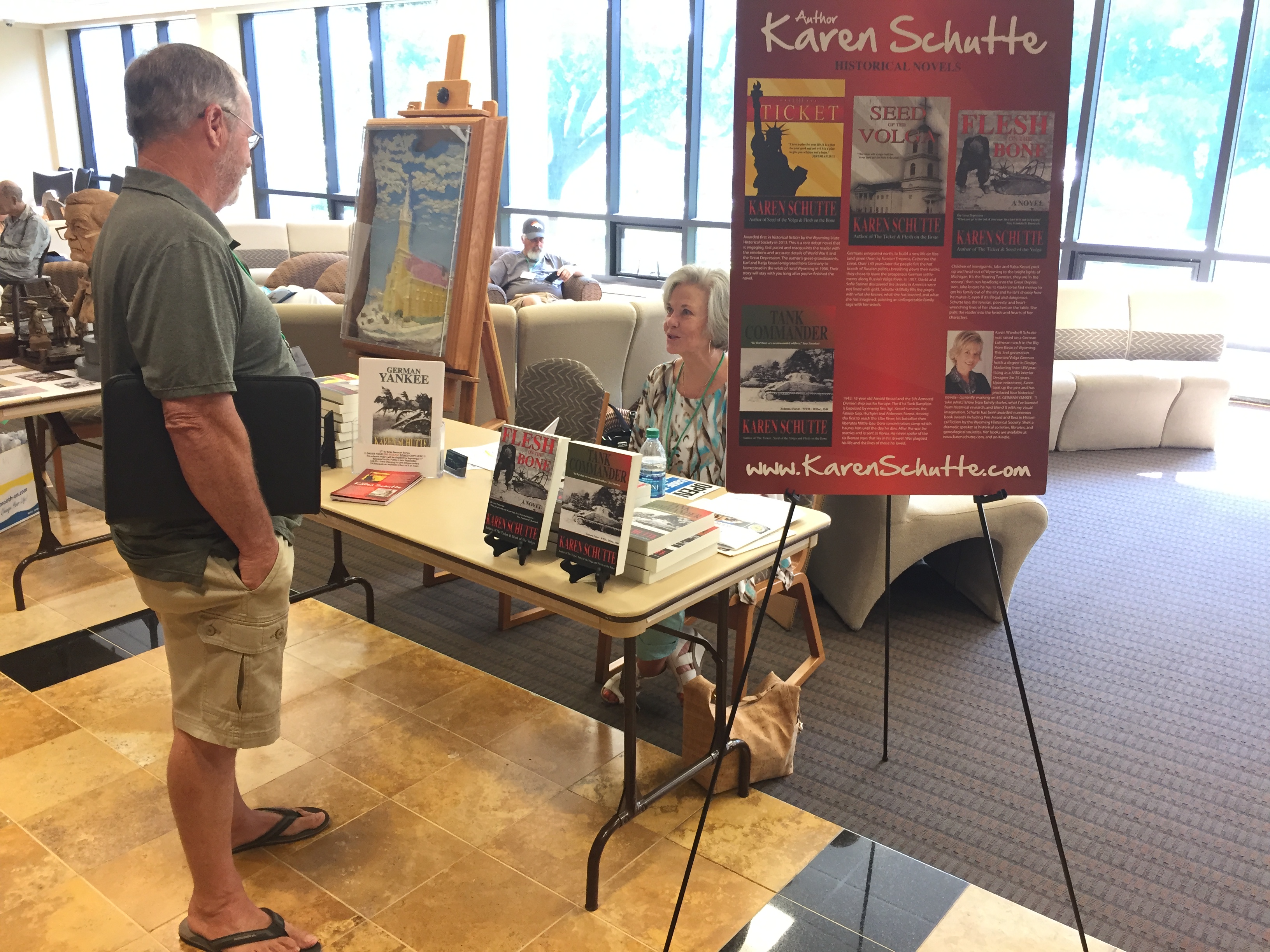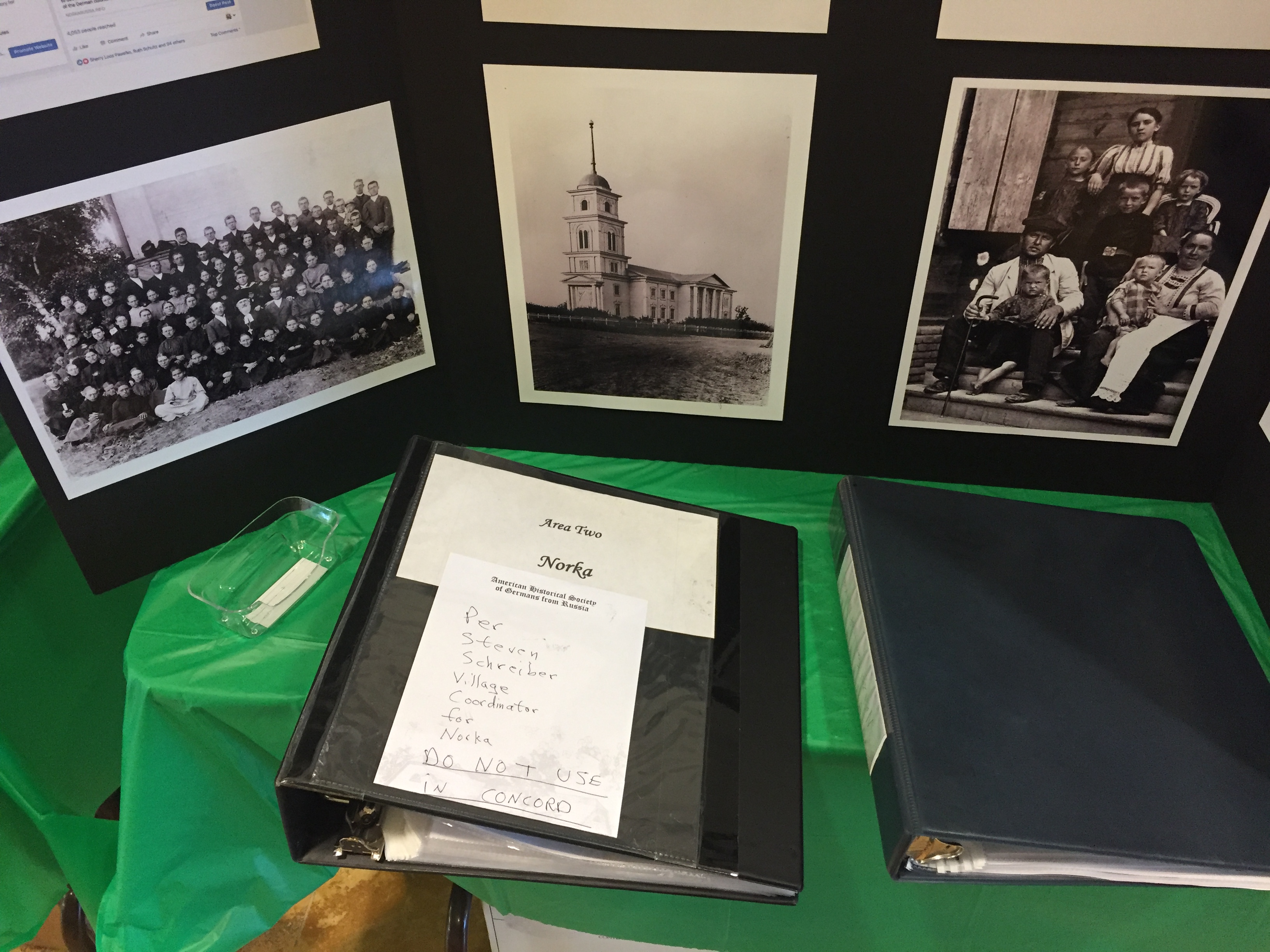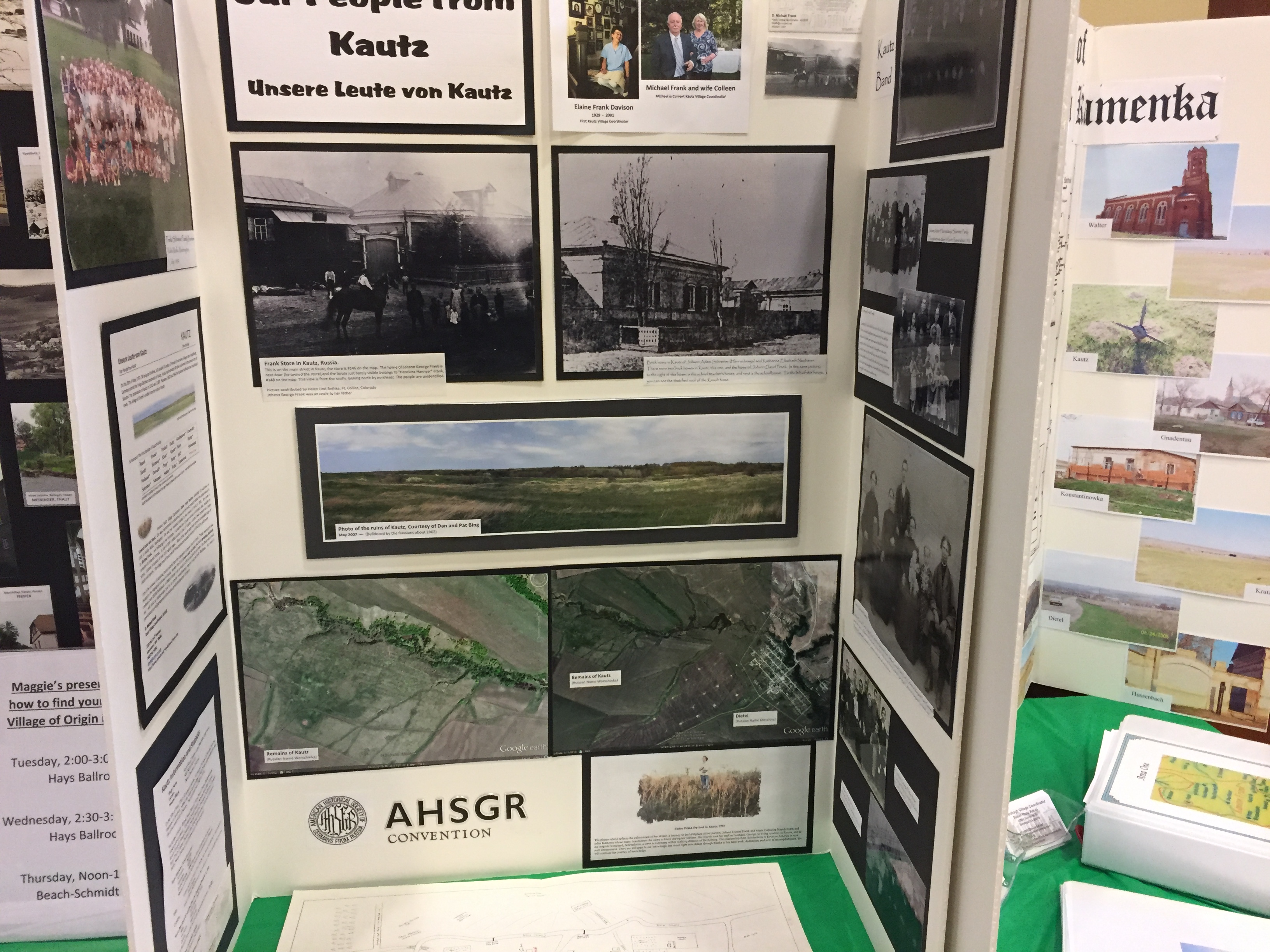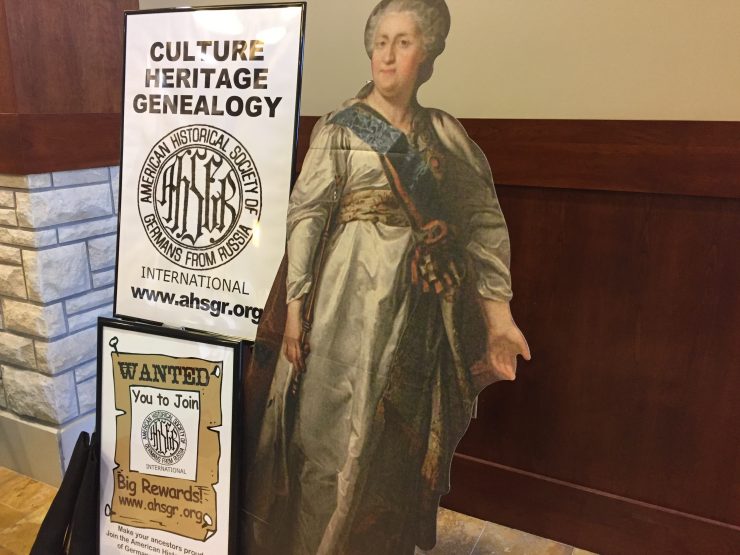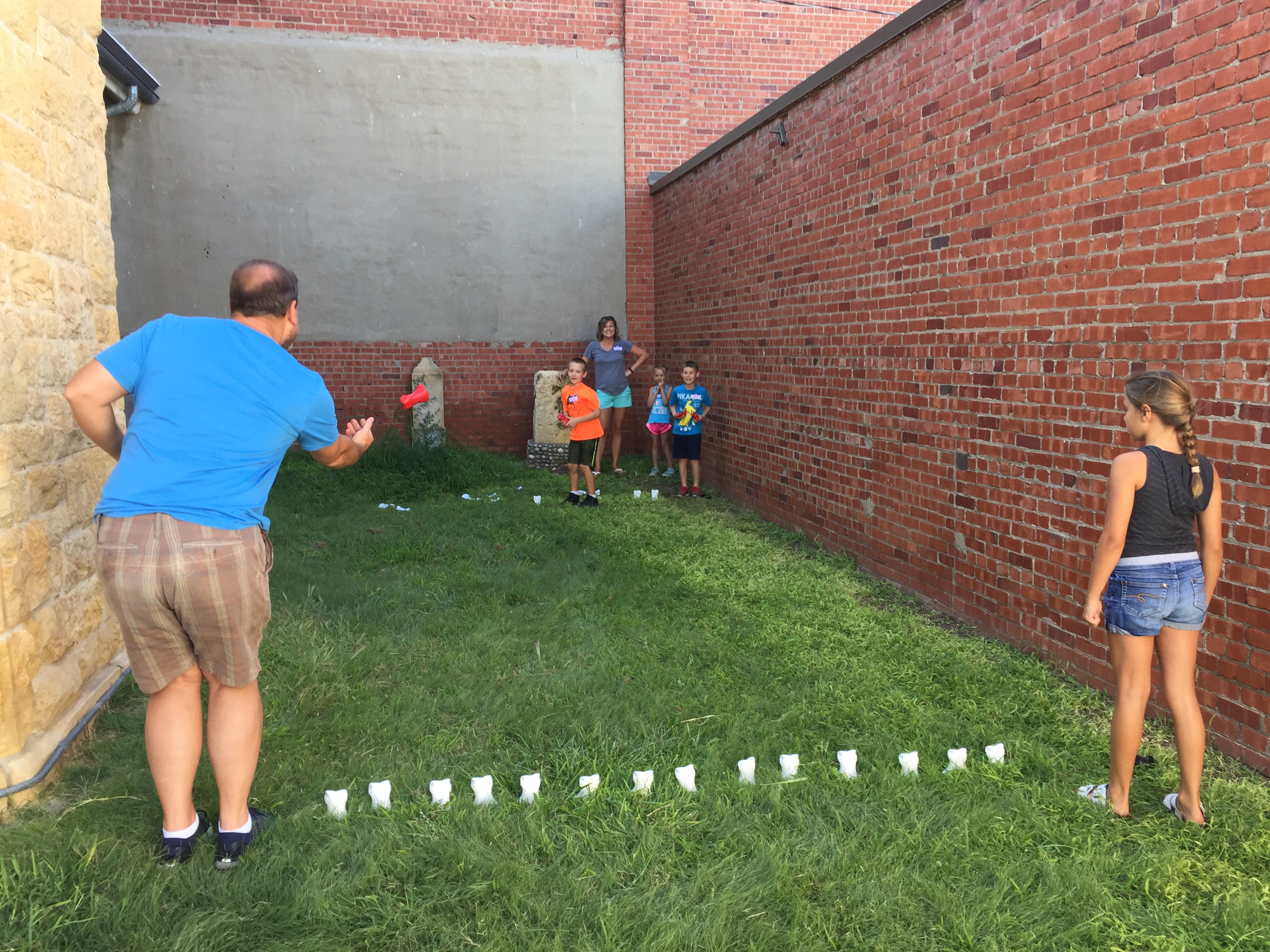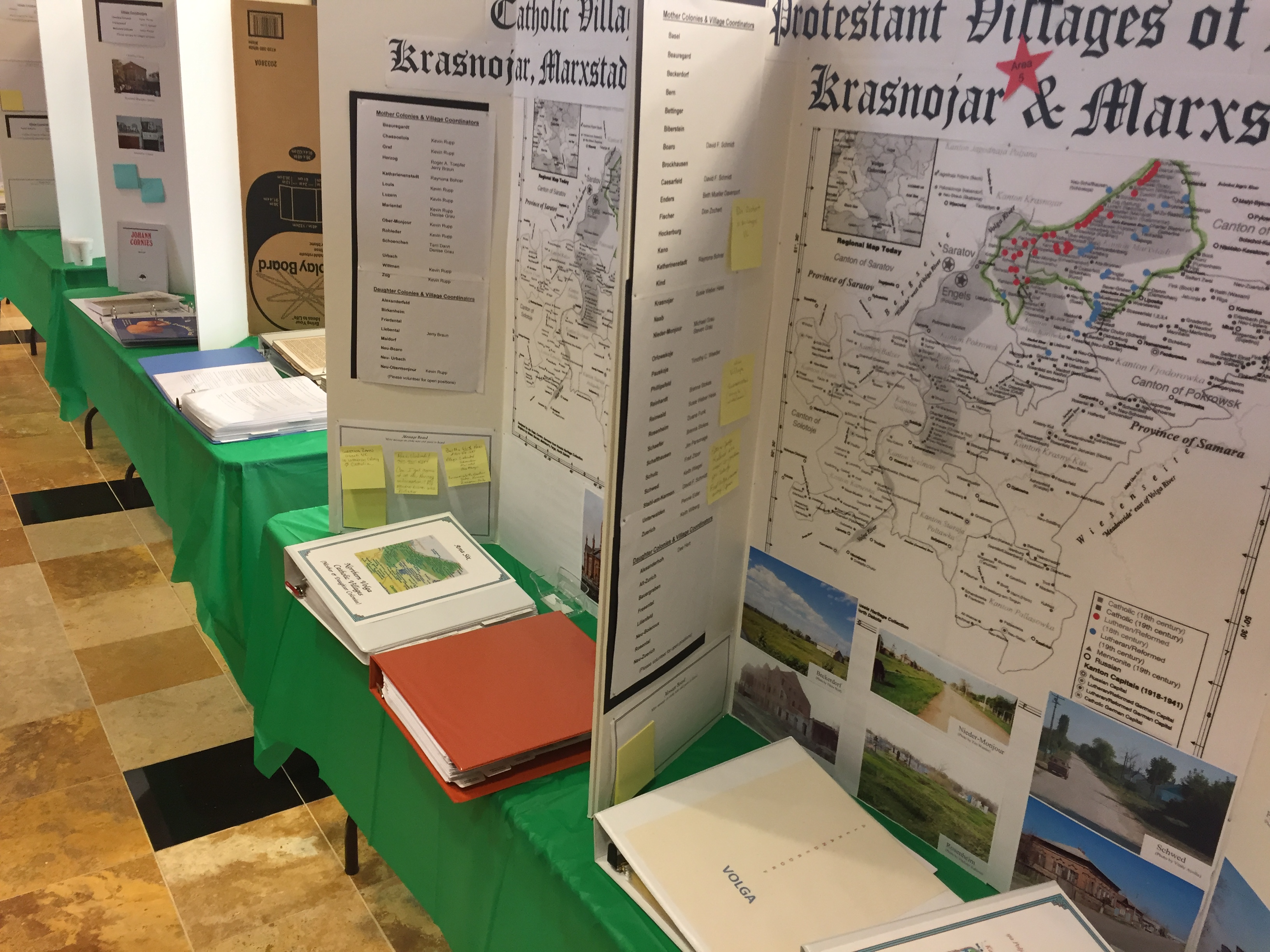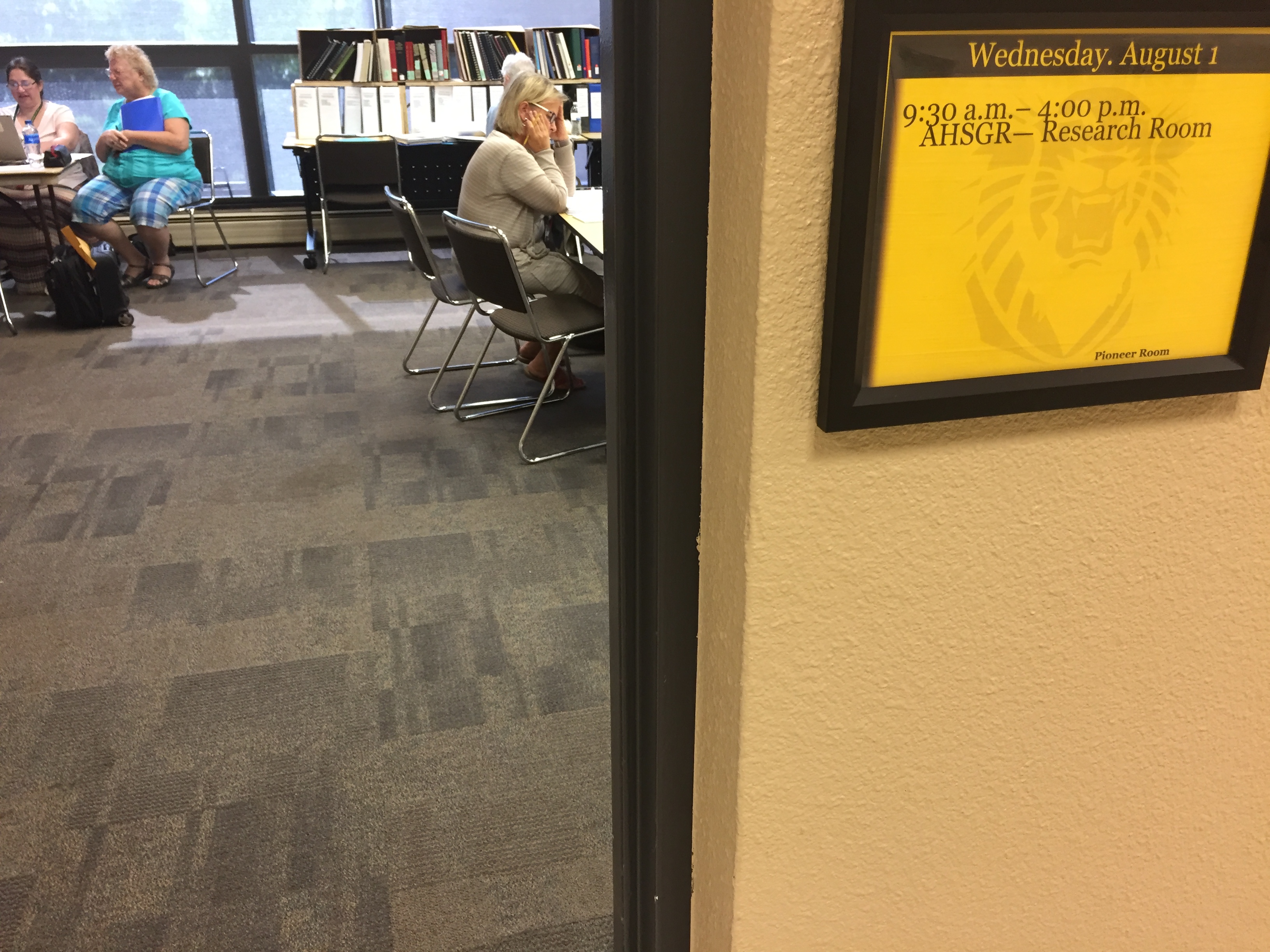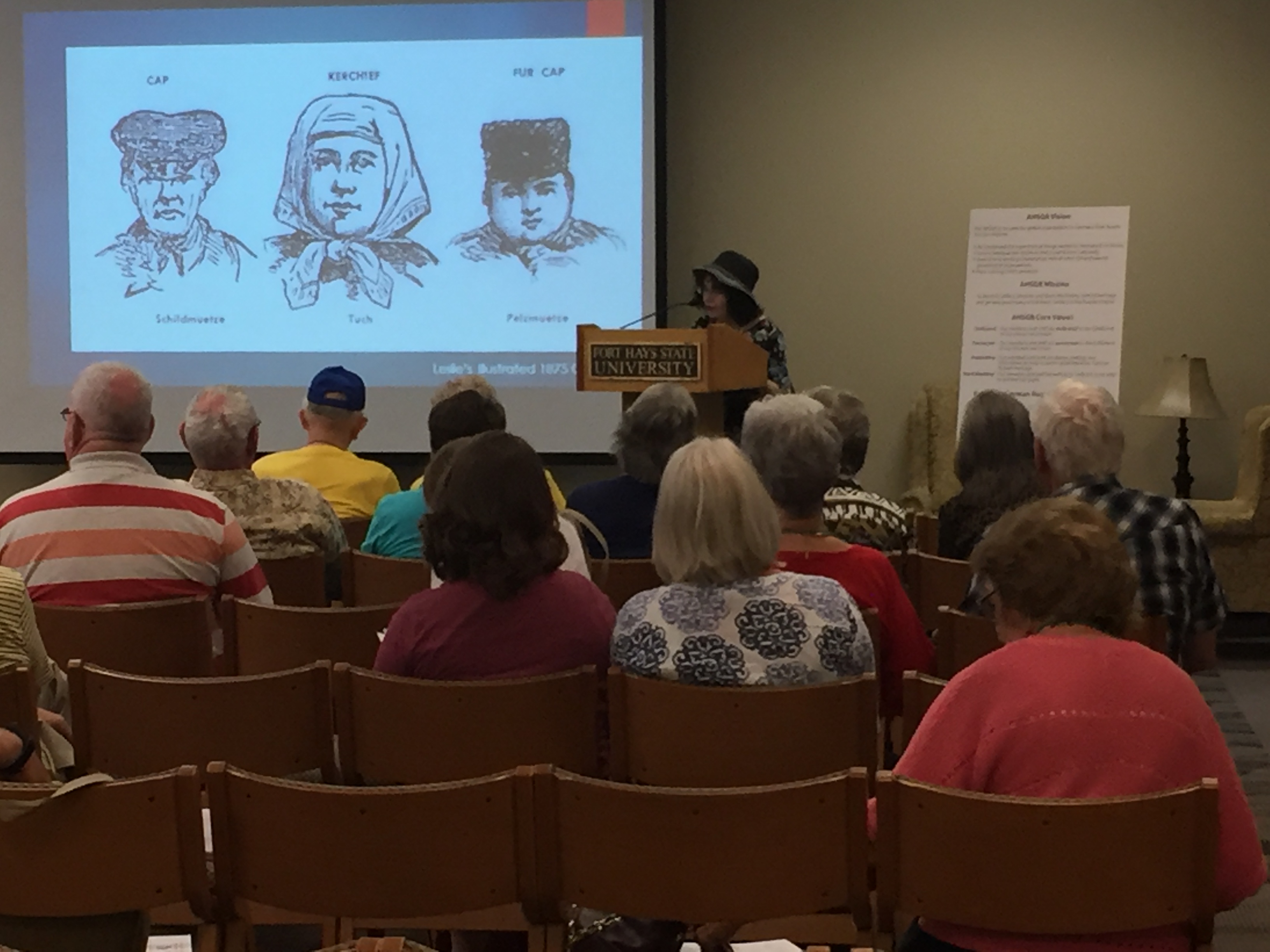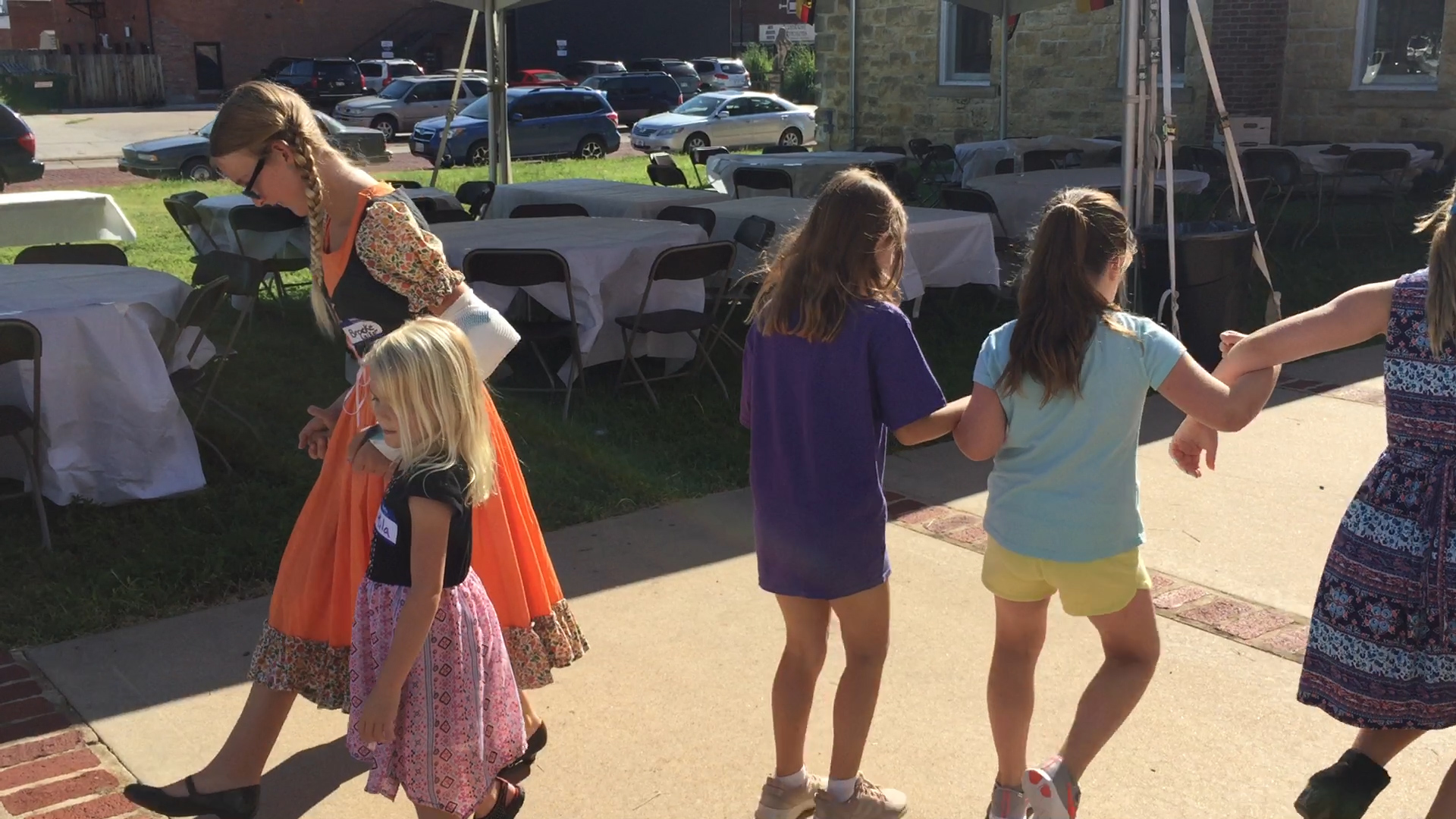
By BECKY KISER
Hays Post
It was perfect polka weather Wednesday morning for Kindertag, a youth heritage outdoor day presented in connection with the 49th annual international convention of the American Historical Society of Germans from Russia underway in Hays.
More than 350 people from across the United States as well as Canada, Germany and Russia are attending the four-day convention headquartered in the Fort Hays State University Memorial Union.
Themed “The Storm,” participants are learning about life in the Germanic colonies of the Russia Empire as the 1917 Russian Revolution began. They’re also looking for and sharing information about their German-Russian ancestors and heritage.
The international society is headquartered in Lincoln, Nebraska, where the 50th anniversary will be celebrated in 2019. Executive Director Sherry Pawelko describes herself as “100 percent Volga-German, from both sides of the river.”
“We represent all different regions of settlements where German people were in Russia, including the Volga (river) area and of course, there are a lot of Volga-Germans in the Hays area,” she said.
“We have a rich heritage and we don’t want to forget it.”
According to the society’s website, the Germans from Russia story begins in 1762 with the Manifesto issued by Catherine the Great. By the end of the 19th century, there were about 1.8 million Germans in Russia. In 1872, the Germans in Russia began to emigrate to the United States, Canada, Brazil, and Argentina.

The society focuses on research. “We want to be here for future generations to do research, to find out about their families and their heritage,” Pawelko stressed.
One of the rooms in the Memorial Union is entirely lined with reference materials, computers and internet connections to aid in that research.
The future generations were also doing some research of their own at the Ellis County Historical Society Museum in downtown Hays.

Educational activities showed how Germans from Russia lived, many of them on farms or in rural villages. The nearly 60 children learned from local volunteer Mary Kay Schippers how sauerkraut and butter were made, how clothes were cleaned before the advent of electricity and where eggs actually come from.
After the chores were done, children and adults enjoyed leisure activities including dances and games.
Munjor residents Sarah Leiker and her daughter Brooke, who was wore traditional German garments, taught the young participants how to polka.
“They were really good,” Brooke said.

Hays resident Jerry Braun organized a rousing game of Bunnock, “The Game of Bones,” which originally used horse knuckles tossed between two teams trying to knock down all their opponent’s “bones” with the fewest number of throws.
“Bunnock began as a pastime by those in Russian military service and the soldiers brought it back to their families,” Braun explained. Today, Bunnock tournaments thrive in Canada, he added. It’s one of four countries where the Germans in Russia began to emigrate in 1872, along with the United States, Brazil, and Argentina.
Another popular game was Durak, the card game of “The Fool.” “You must lose your cards to win,” grinned Braun, “and the last player with cards is the Durak or Fool.”
Sylvan Grove resident Jana Wehrman brought her daughters Emma, 10, and Eastin, 8, to learn more about their dad’s side of the family.
“We homeschool our two girls and this is a good way to start our school year,” Wehrman said as she watched Schippers demonstrate life on the farm in the old days.
“We live on a farm but they’re learning what it used to be like for their grandmas and grandpas. They weren’t sure about the sauerkraut,” she laughed, “but they were excited to learn about some of those traditions.”
Wehrman is a former science teacher at Sylvan Grove High School and uses those skills in homeschooling her young daughters.
“Last week we looked up where Germany is. We talked about their great-grandparents and how they got to the United States. Eventually in this school year, we’ll probably do a unit on Europe.”
Concurrent sessions at the convention include DNA analysis, ethnic clothing, religious persecution, folklore, religious architecture, music, and authors discussing their books related to German-Russian stories and history.

Area residents Tom Haas, Leo Dorzweiler and Ray Breit translated a German conversation into the local dialects spoken in Munjor, Catherine and Pfeifer.
Tours of historical and cultural sites were offered to the Volga-German “villages” in Ellis County and their famous limestone churches built by immigrants.

Pawelko was especially excited to tour the studio of Hays limestone artisan Pete Felten.
“We have a copy of Felten’s statue that’s in Victoria in Lincoln, and so that was pretty thrilling to see the original.”
They also have toured the Bukovina Society Museum in Ellis and the Ellis County Historical Society Museum.
Sam Brungardt along with Charlie Dorzweiler, who recently opened Das Essen House restaurant in downtown Hays, held cooking demonstrations of traditional German dishes including potato and dumplings and Christmas cookies.
“It’s just been a little something for everyone,” Pawelko said with a smile. “Kevin Rupp (Hays) and Leonard Schoenberger (Ellis) of the AHSGR Sunflower Chapter have just been incredible in organizing this.”
Also assisting with the convention are the Kansas Northeast Chapter and the Golden Wheat Chapter, along with the Hays Convention and Visitors Bureau. It continues through Thursday.
The international convention was last held in Hays in 2007.
